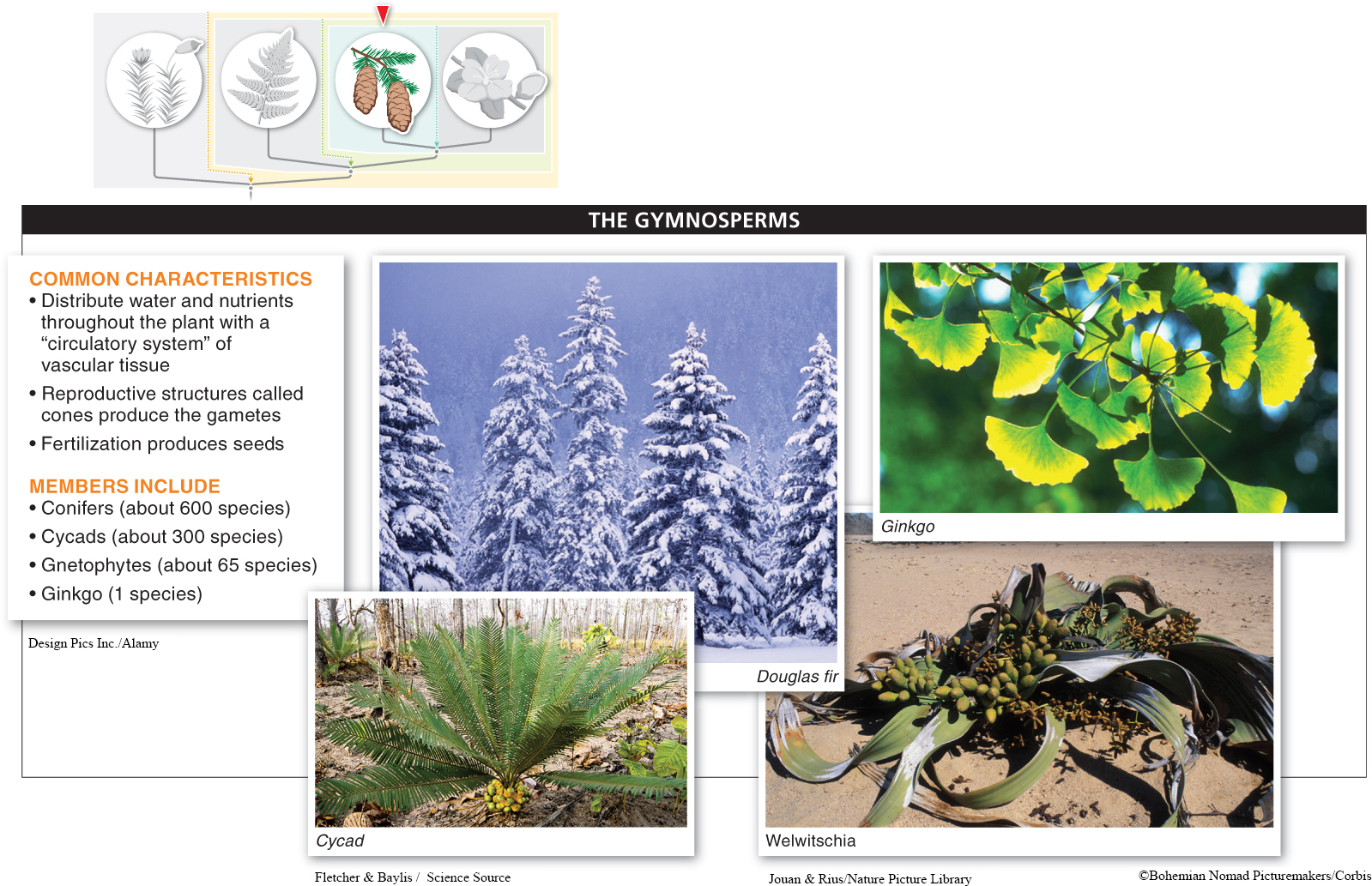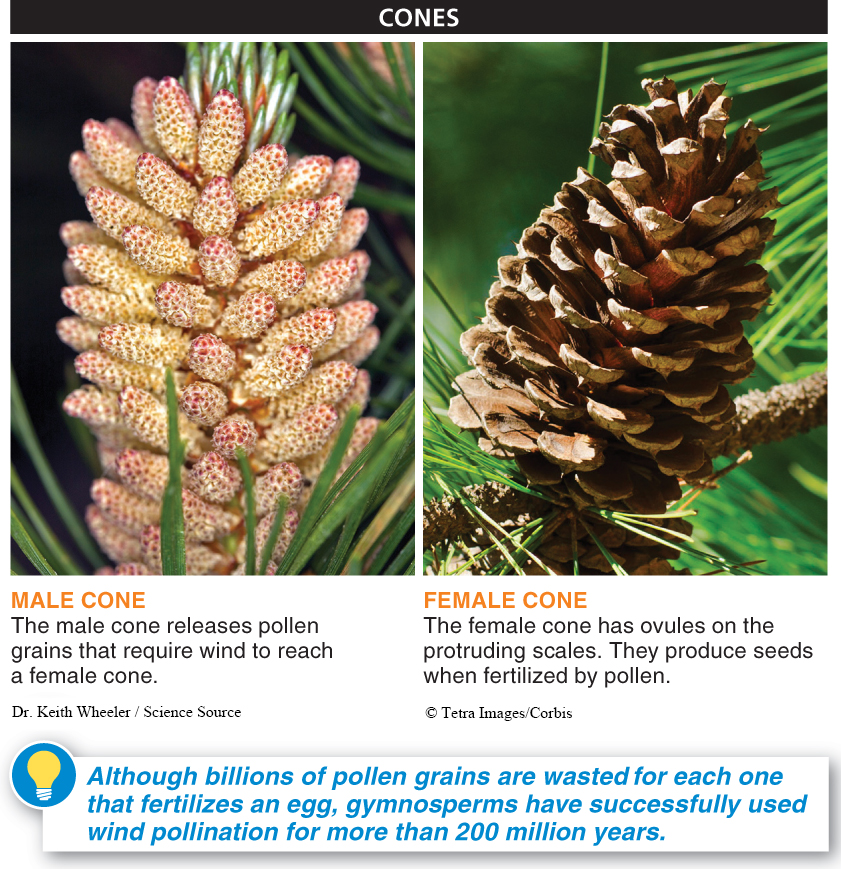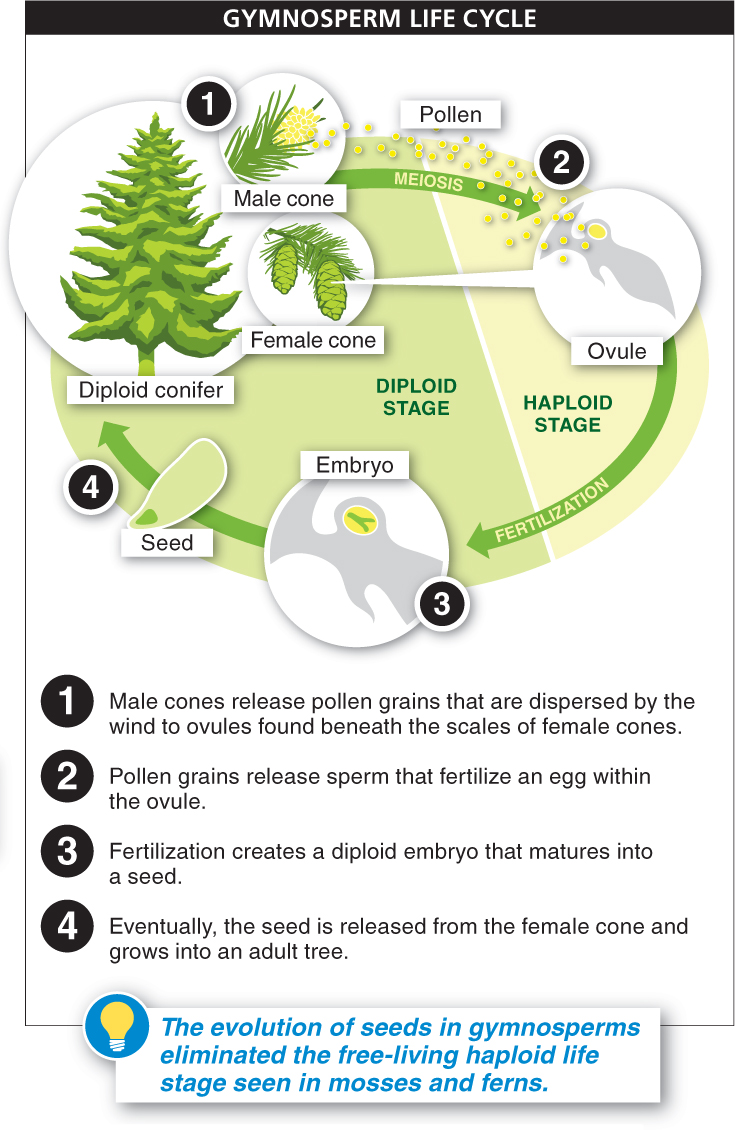12.0.3 12.6: With the evolution of the seed, gymnosperms became the dominant plants on earth.
Gymnosperms include four major groups: the conifers, cycads, gnetophytes, and ginkgo (just one species) (FIGURE 12-14). All of the 900 or more species of gymnosperms are seed-


Pines, spruces, firs, redwoods, and their relatives are familiar to residents of the temperate regions: many of these conifers have needle-
The reproductive structures of gymnosperms—
Q
Question 12.3
Why does so much tree pollen coat the windshields of cars parked outside in the spring?

When the pollen arrives at the female cone, a pollen tube forms and transports the haploid sperm to the ovule, where fertilization occurs and a diploid embryo begins to grow. The embryo develops slowly within the female cone over the course of many months, until the scales of the cone open and release the seed, ready to sprout into a new plant (FIGURE 12-17). With the evolution of seeds, gymnosperms developed a life cycle with no free-

505
506
This evolutionary change in life history probably reflects the different degrees of evolutionary fitness of haploid versus diploid organisms. A haploid organism has just one copy of each chromosome, which means it has just one copy of each allele. If the haploid organism carries a defective allele for a critically important gene, the organism is doomed, because it has only that one defective version of the gene. In contrast, diploid organisms have two sets of chromosomes and thus two copies of each allele. If one copy is defective, the second copy can function as a backup, enabling the plant to produce the gene product. As a result, mutations are much less likely to be lethal for diploid organisms than for haploid organisms.
TAKE-HOME MESSAGE MESSAGE 12.6
Gymnosperms (pine trees and their relatives) were the earliest plants to produce seeds. This mode of reproduction offered advantages over the spores of earlier plants and gave gymnosperms the boost they needed to become the dominant plants of the early and middle Mesozoic era. Gymnosperms depend on wind to carry their pollen. Conifers protect the developing seeds in the female cone.
Why do gymnosperms possess two different types of cones?
507